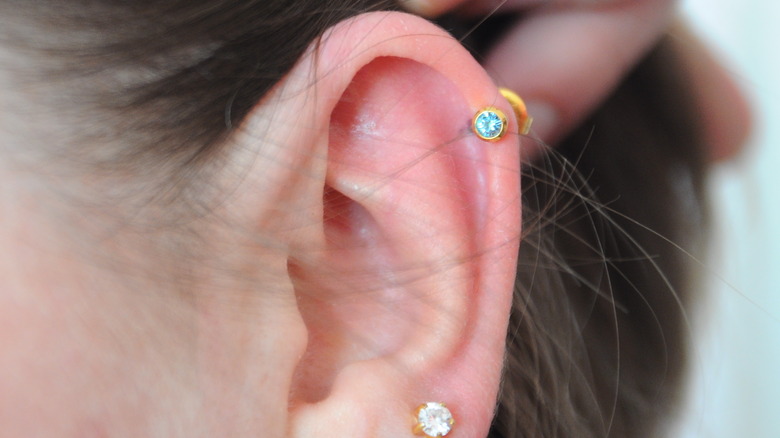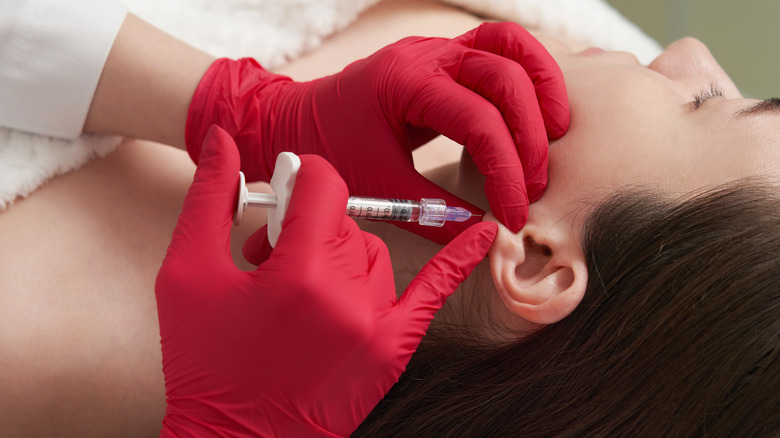Piercing Bump Versus Keloid: What's The Difference?
Piercing bumps and keloids can both develop at the site of a piercing, but they are not one and the same. Appearance, location, size, and the time at which they emerge are all factors that set a piercing bump and a keloid apart (via MedicalNewsToday). If you've gotten a new piercing within the last year and you've started to notice a raised marking around the area, here are some ways to help determine which of the two it might be.
Shortly after receiving a new piercing, a piercing bump may emerge as a small lump due to inflammation that occurs during the body's healing process. Sometimes accompanied by fluid, these lumps are usually flesh-colored and remain in close proximity to the piercing site. Piercing bumps are not generally a cause for concern and often heal on their own with proper cleaning and care.
While a piercing bump is a natural byproduct of the body's healing process, a keloid, on the other hand, is thought to be a disruption of the normal healing process, says the Mayo Clinic.
Treatment options for keloid removal
A keloid is a raised scar that emerges due to an overproduction of collagen released during wound healing, according to the Mayo Clinic. Ingrown hairs, burns, bug bites, and acne can all prompt the development of a keloid, as well as ear piercings. Unlike a piercing bump, a keloid generally takes more time to emerge following a new piercing. In fact, a keloid may not develop for 3 months to a whole year after the fact (via MedicalNewsToday). A keloid will often darken over time and can grow in size, expanding beyond the original piercing site over the course of months or years.
While not cancerous or contagious, some people opt for the removal of a keloid scar for cosmetic purposes. Such treatment options include cryotherapy, corticosteroid injections, laser treatment, or surgical removal. However, research published in Dermatologic Surgery states that surgical removal of a keloid without additional treatment can have up to a 100% risk of recurrence. Therefore, experts at the Mayo Clinic suggest the use of pressure earrings following a new earlobe piercing. Also used as medical treatment following surgical removal of a keloid, pressure earrings provide topical pressure along the earlobe and are designed to reduce scar formation and evenly displace collagen fibers along the skin's surface.


